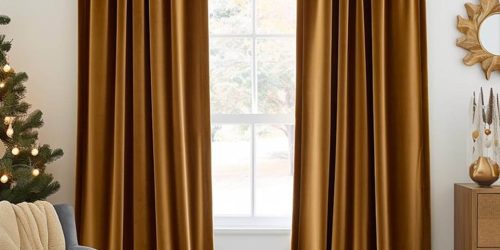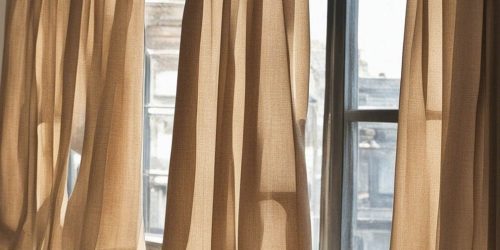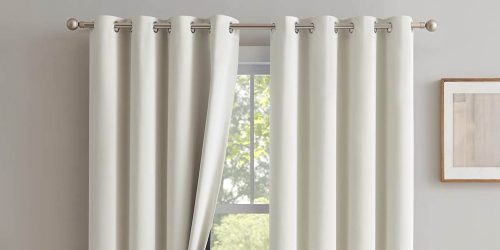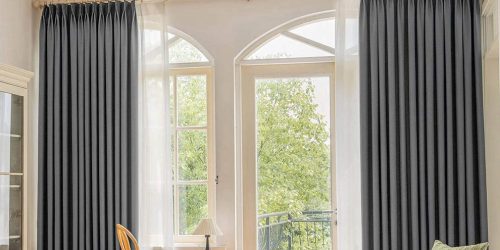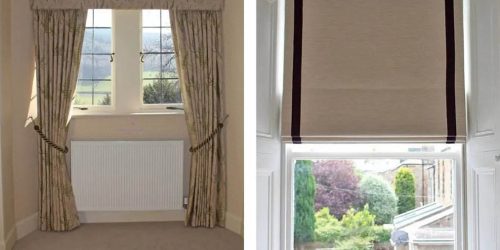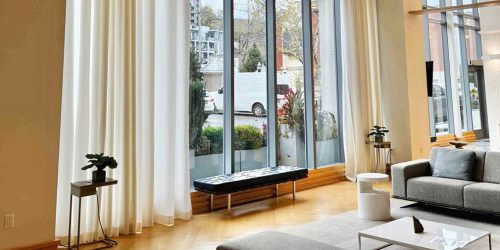How to Enhance the Overall Ambiance of Your Home Through Curtain Design
Curtains are often considered a functional element in home decor, designed to provide privacy, regulate light, and maintain a comfortable indoor environment. However, curtains also offer a unique opportunity to enhance the aesthetic appeal and overall ambiance of your home. With thoughtful curtain design, you can transform your living spaces, adding warmth, elegance, or even a touch of drama.
In this article, we will explore how to use curtains to elevate the atmosphere of different rooms in your home. We will discuss various curtain styles, fabric choices, colors, patterns, and the right way to hang them. Additionally, we will delve into the impact curtains can have on the mood of a space, their role in design cohesion, and how to align them with your personal taste and the functionality of the room.
1. The Power of Curtains in Home Design
Curtains are one of the most versatile elements in interior design. They not only provide necessary functionality—blocking out sunlight or offering privacy—but they also have the power to set the tone of a room. The right curtains can complement the overall theme, create focal points, and even serve as a statement piece that ties the whole room together.
Beyond functionality, curtains can contribute to the atmosphere of a room. For instance, heavy, dark-colored curtains can create a cozy, intimate environment, while light, airy curtains can make a space feel fresh and open. By choosing the right fabric, color, and style, curtains can subtly influence how we feel in a space—whether it’s restful, energized, or sophisticated.
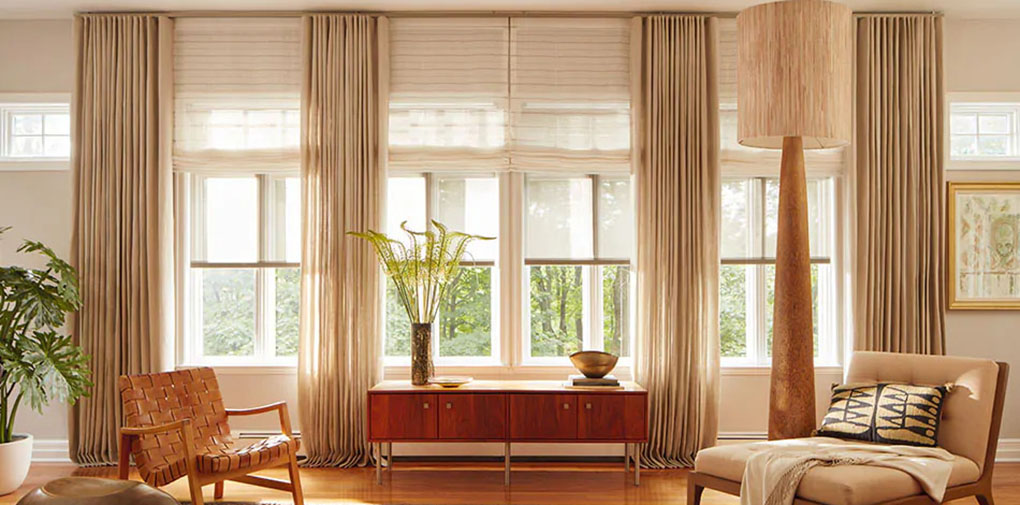
2. Understanding the Role of Curtains in Different Rooms
The use of curtains varies from room to room, and the ambiance you wish to create should guide your choices. Let’s look at how curtains can be tailored to specific areas of your home:
Living Room
The living room is often the heart of the home, where families gather, guests are entertained, and relaxation takes place. For this reason, the curtain design in the living room should strike a balance between style and function. Depending on your decor, you can choose curtains that either complement or contrast with your furniture and wall colors.
- Light and Airy: Sheer curtains or light linen fabrics can add an airy, open feel, allowing natural light to filter through while still providing some privacy.
- Dramatic Elegance: Velvet or heavy silk curtains in bold colors or rich textures can bring a sense of grandeur and sophistication, particularly if your living room has a more formal or luxurious design.
- Color Coordination: Choose curtains that blend harmoniously with your color scheme. If your room has neutral tones, you can introduce a pop of color through your curtains to create visual interest. If your space already has vibrant accents, opt for more neutral or complementary curtain shades.
Bedroom
In the bedroom, curtains serve an essential function in helping you control the light and create a restful environment. The choice of curtain fabric, color, and style can significantly impact the mood of the room and your quality of sleep.
- Dark and Cozy: Blackout curtains are an excellent option for creating a serene, dark environment for sleep. Opt for darker shades or rich fabrics like velvet for an added sense of coziness and comfort.
- Romantic Atmosphere: Soft, light fabrics such as cotton or linen in neutral tones or pastel shades can help create a peaceful, calming bedroom. For a more romantic feel, choose curtains with subtle textures or patterns like floral prints or delicate lace.
- Layered Design: Layering curtains with blinds or shades gives you flexibility in controlling both light and privacy. A combination of light, sheer curtains with heavy drapes provides both functionality and visual appeal.
Kitchen
Although curtains in the kitchen are often overlooked, they can play an important role in enhancing the overall ambiance of this space. Kitchen curtains need to be both functional and aesthetically pleasing.
- Fresh and Light: In a kitchen, light fabrics such as cotton or linen are ideal as they allow natural light to flood the room. Opt for bright, cheerful colors or simple patterns like stripes or gingham to create a welcoming, fresh environment.
- Vintage Charm: If you have a vintage or farmhouse-style kitchen, consider lace or crocheted curtains for a nostalgic, charming look. These curtains evoke a sense of homeliness and warmth.
- Practicality: Since kitchens are high-traffic areas, opt for curtains that are easy to clean and maintain. Short curtains, such as cafe-style curtains or valances, are practical and stylish for kitchen windows.
Dining Room
The dining room is a space for formal gatherings, family meals, or casual dining. The curtains here can elevate the room’s ambiance, enhancing its sophistication or intimacy.
- Sophisticated Elegance: Floor-to-ceiling curtains in luxurious fabrics like silk or velvet can create a dramatic effect, especially if your dining room features a chandelier or a large dining table. Dark, rich colors like deep red, navy, or charcoal gray can add a sense of formality and refinement.
- Light and Breezy: For a more casual or contemporary dining room, lighter fabrics such as cotton, linen, or sheer materials are perfect. Soft colors or patterns, such as soft florals or geometric prints, can create a relaxed and inviting atmosphere.
3. Choosing the Right Curtain Fabric
The fabric of your curtains plays a crucial role in both their functionality and the overall look they create. Different fabrics evoke different moods and can be tailored to suit the atmosphere of your home.
- Cotton and Linen: Lightweight and breathable, cotton and linen curtains are ideal for creating a fresh, natural look. These fabrics work well in spaces where you want to maintain an open, airy feeling, such as living rooms, kitchens, or bedrooms.
- Velvet and Silk: Heavy fabrics like velvet and silk bring a luxurious, opulent feel to a room. These are great choices for formal spaces like dining rooms or for creating a cozy, intimate vibe in living rooms or bedrooms.
- Sheer Fabrics: Sheer curtains are perfect for allowing natural light into a room while maintaining privacy. These fabrics are often used in spaces where you want to create a light, airy feel, such as living rooms or sunrooms.
- Blackout Fabrics: If you need to block out light completely, especially in bedrooms or media rooms, blackout fabrics are a must. They help regulate the temperature, reduce noise, and create a peaceful environment for sleeping or watching movies.
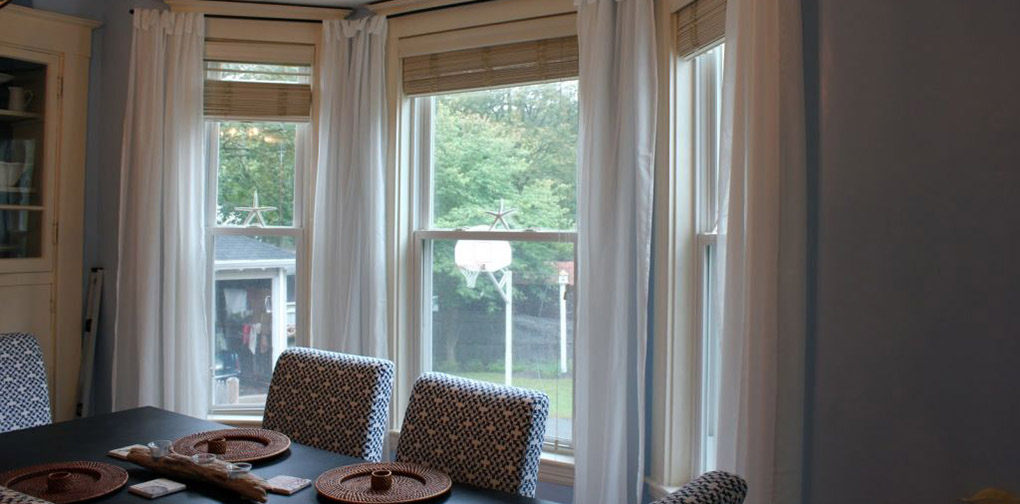
4. Curtain Colors and Patterns
Curtain colors and patterns are one of the easiest ways to inject personality and style into a room. The right color and pattern can completely transform the ambiance and mood of the space.
- Neutral Tones: Neutral curtains in shades like white, cream, beige, or gray create a timeless and versatile look. They are especially suitable for spaces where you want the decor to feel calm, neutral, and understated.
- Bold Colors: For a vibrant, energetic vibe, consider curtains in bold, saturated colors such as deep blues, emerald greens, or rich reds. These colors can add a sense of luxury, drama, or playfulness to a room.
- Patterns and Prints: If you want to introduce a playful or eclectic touch, opt for patterned curtains. Floral patterns can create a romantic or vintage feel, while geometric prints work well in modern or minimalist spaces. Stripes, polka dots, and abstract designs can all bring an element of interest and personality to your room.
5. The Right Curtain Length and Placement
The length and placement of your curtains are also essential considerations when designing your space. Properly hung curtains can make a room appear larger, more balanced, and more elegant.
- Floor-Length Curtains: Floor-length curtains create an elegant, polished look. They help to elongate the walls and create the illusion of height, especially in smaller rooms.
- Café-Style Curtains: Short curtains, such as café-style curtains, work well in kitchens or small spaces. They cover only the lower half of the window, providing privacy without blocking too much natural light.
- Ceiling-Hung Curtains: Hanging curtains closer to the ceiling rather than directly above the window frame can create a sense of height, making the room feel more expansive and open.
6. Curtain Hardware and Accessories
The curtain hardware you choose also plays a significant role in the overall aesthetic of the space. From curtain rods to tiebacks, these accessories should complement your curtain choice and room decor.
- Elegant Rods and Finials: Curtain rods come in various styles and materials, from sleek, modern metals to ornate, vintage-inspired designs. The rod should match the overall style of the room and be proportional to the size of the window.
- Tiebacks: Tiebacks are used to pull the curtains to one side, creating a more open and airy look. They can be both decorative and functional. Opt for simple tiebacks in a neutral color for a minimalistic approach or choose statement tiebacks with tassels for a more traditional, luxurious feel.
Curtains are much more than a functional window treatment—they are a powerful tool for enhancing the overall ambiance of your home. With the right fabric, color, style, and placement, you can elevate the mood of any room, whether you’re aiming for a cozy, intimate atmosphere or a grand, dramatic effect. By carefully considering the role of curtains in your space and aligning them with your overall design vision, you can create a home that feels balanced, inviting, and beautifully styled.
